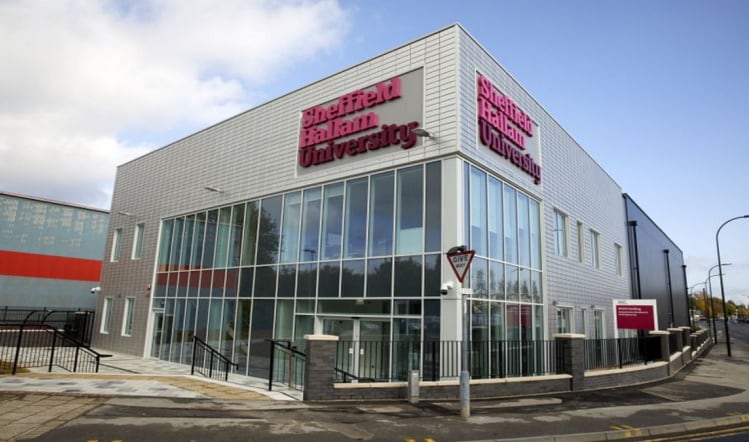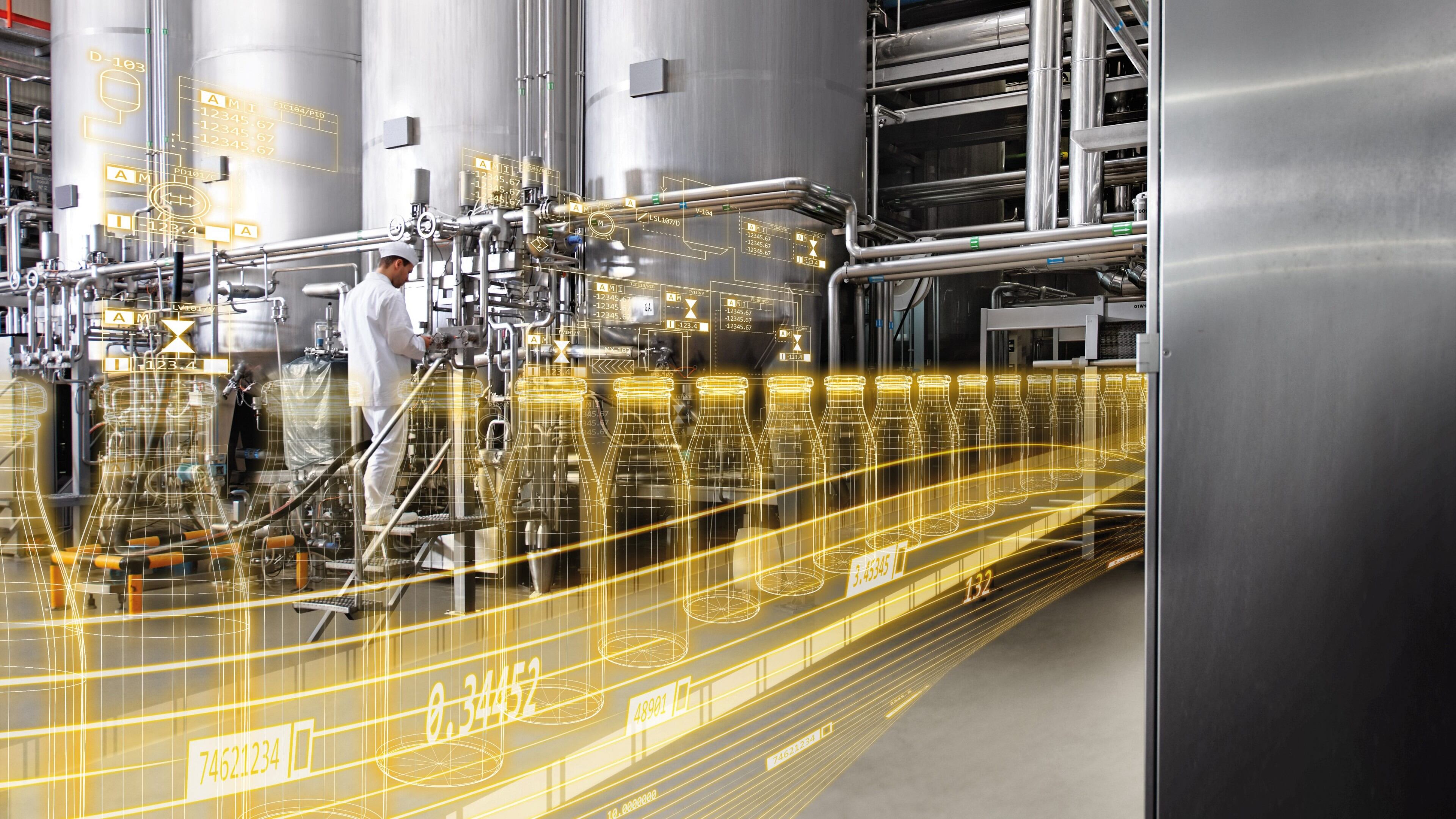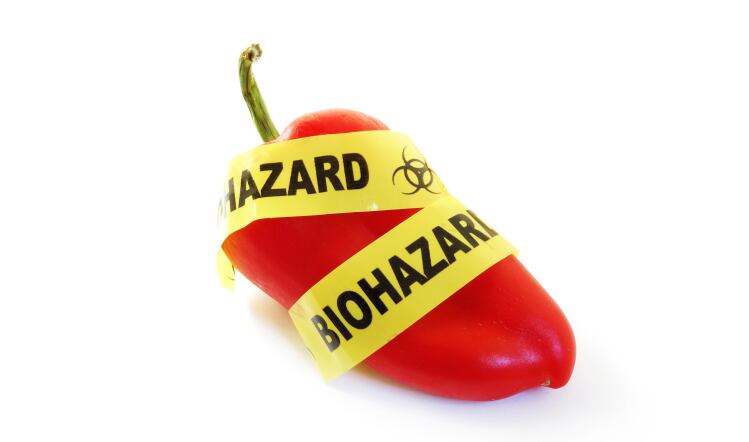Gadgets like security wrist tags for machine operators, goggles and smart helmets are being increasingly accepted as essential because of the many advantages and higher return on investment in terms of time, efficiency and superior industry hygiene practices.
Most food production units come with wash-down environments, meaning utmost care needs to be taken to avoid any food contaminants, and food handlers are not permitted to wear jewellery or watches. Some of these areas cannot be compromised with wearables, but they can be used to great effect in specific areas of food production, such as in the supply chain, for monitoring food hygiene and in enhancing safety standards.
For example, smart glasses with in-built cameras can help quality control staff to monitor hygiene standards. Similarly, machinists can use wearables to identify very hot surfaces, any machinery malfunction and spilled fluids, helping to avoid accidents in the workplace.
Smart goggles
Other areas where wearables have made an impact include training. For instance, a machinist can have a recipe displayed on smart goggles and use the equipment to mix the right quantity, rather than using other equipment which needs further monitoring and management.
Siemens’ own Internet of Things (IoT) products are connected to various devices that help in monitoring food safety during transportation, managing temperatures and other weather conditions that are not conducive for the product. These systems are scalable and compatible with any third-party equipment, including wearables.
Industry hazards, such as sick workers who report to work despite some severe contagious health issues, can be detected through wearables like wristbands, which can monitor body temperature, blood pressure and other metrics. This saves the industry thousands of pounds in avoiding food contamination, cases of which are closely monitored by the Food Standards Agency.
New applications using IoT technologies are constantly showing promise for improving food safety in food processing facilities. Wearables are part of these astounding technologies, offering a range of benefits, including tracking products along supply chains, use of sensors to monitor the state of food and giving warning alerts of food safety hazards.
Hygiene issues
Employees are in contact with food before, during and after processing or are required to handle raw foodstuffs, which are high-risk in contaminants. It is therefore critical that hygiene issues must be tackled immediately to prevent contamination of food items, recalls, loss of revenue and damage to brand reputation.
The advent of wearables enhances safety, rather than endangering it. For example, employee health can be monitored in real-time, thanks to IoT-enabled technologies such as wearables and home-based healthcare systems. Employees can monitor their own health and share verified data with the company directly, demonstrating they are not fit for work, avoiding the spread of viruses or bacteria.
In the factory, body temperature-monitoring combined with facial recognition and other biometric identification can automatically pick up indicators of illness, such as high temperatures.
As well as helping with hygiene and contamination issues, wearables are also enabling manufacturers to save time and improve productivity and safety standards. The shop floor has become smarter and more connected, with companies investing in innovations that will give them the competitive edge. Introducing smart devices to the food and drink manufacturing process could improve production across the entire supply chain.
Smart watches
The rise of devices such as smart watches, smart gloves and smart helmets, is complementing safety goals. Studies have shown that such devices are going to become more prevalent in factories of the future. Smart gloves, smart watches and other wearable scanners have been proven to make processes faster and easier for employees.
For example, wearables enable users to scan barcodes and QR codes of components and workflow processes, without having to interrupt work to pick up a scanner. Alerts can also be transferred to smart wearables to ensure workers are following the right process, which reduces errors and improves safety.
The hands-free advantage also cuts down on contamination and disinfection processes. Devices such as smart glasses, vests and helmets can present instructions to workers without them having to refer to a separate computer or manual. This could help save time and ensure more accuracy in the workplace.
Artificial intelligence
Smart glasses also have a communications interface and internet connectivity that could, for example, allow employees to discuss issues with an off-site expert. Wearables powered by artificial intelligence, together with our ability to provide the focus for the tech, could be the innovation that streamlines the manufacturing industry.
Workers can also use wearables to augment or improve existing processes and functions within industrial and commercial settings. On the production line, for instance, staff members could use the tech to stay focused on what they’re doing, obtain additional info or deliver remote orders or commands.
The potential of wearables is huge, but the industry must adopt them without compromising quality and safety. The truth is that evolving technologies are creating smarter wearables that altogether eliminate the chance of contributing to contamination. What is more significant is that, as most of these devices enable information-sharing on the go, it makes them a highly versatile key factor in accelerating production and avoiding delays.
Keith Thornhill is Siemens Digital Industries’ head of food & beverage industry UK.




